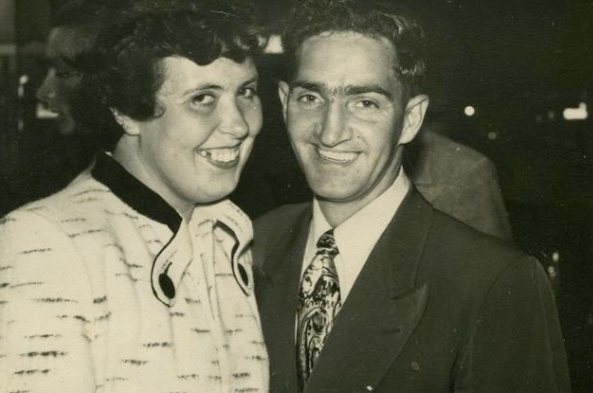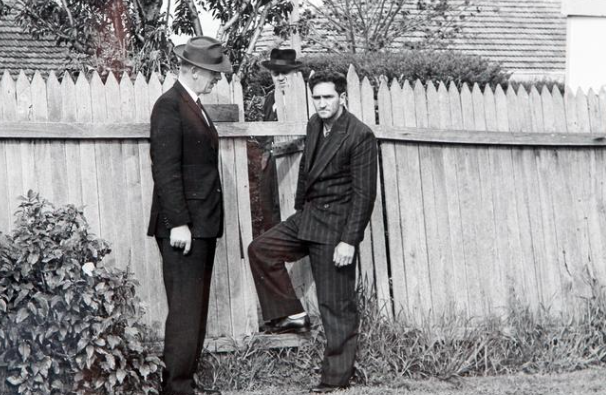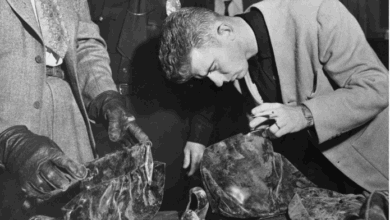The Night Caller

The Chilling Crimes of Eric Edgar Cooke
Eric Edgar Cooke, infamously known as “The Night Caller” or “The Nedlands Monster,” was one of Australia’s most terrifying and unpredictable serial killers. Operating in Perth, Western Australia, during the late 1950s and early 1960s, Cooke’s crimes shattered the sense of safety in what had been a quiet, trusting community. Over the course of five years, he committed a series of seemingly random murders, attacks, and burglaries that left the public and police deeply unsettled.
Early Life and Troubled Beginnings
Born on February 25, 1931, Eric Cooke had a difficult childhood marked by poverty, physical deformities, and an abusive father. He was born with a cleft palate and harelip, which, although surgically corrected, left him with lasting speech problems and low self-esteem. He was frequently bullied by peers and suffered emotional trauma throughout his youth.
Cooke’s home life was no better. His father, Vivian, was a violent alcoholic who beat his wife and children. Eric, the eldest of seven children, grew up in an atmosphere of fear, isolation, and neglect. Despite attempts by his mother to provide love and stability, Eric drifted into criminal behavior from an early age. He was in and out of reform schools and jails, his life steadily heading down a dark path.

A Double Life
By his mid-twenties, Cooke had settled into what appeared to be a normal existence. He married, had children, and held steady employment as a delivery driver and later as a forklift operator. To many around him, he seemed reformed—a family man who had left his troubled youth behind.
But behind this mask of normality, Eric Cooke led a secret life of violence and destruction.
From 1959 to 1963, he embarked on a terrifying spree of crimes that involved burglary, sexual assault, attempted murder, and multiple homicides. What made his crimes especially disturbing was their randomness—victims were of varying ages, genders, and backgrounds. Some were shot, others were stabbed or bludgeoned. There was no clear pattern, making him nearly impossible to track using traditional criminal profiling.
The Killings Begin
Cooke’s first known murder occurred in 1959, when he fatally shot a man through the window of his car. Over the next four years, Cooke would kill at least eight people and seriously injure many more in a series of brutal and disconnected attacks.
Unlike many serial killers, Cooke did not operate with a specific modus operandi. He would drive around Perth at night, looking for opportunities to strike. Sometimes he would enter homes through unlocked doors or windows—once even using a stolen key. He shot people while they slept, stabbed them in alleyways, or struck them with axes or heavy objects. The randomness of his methods earned him the nickname “The Night Caller.”
This unpredictability caused widespread panic in Perth. The city was gripped by fear. Residents locked their doors at night for the first time in decades, and the local police were overwhelmed, desperate for leads.

False Convictions and Tragic Injustice
One of the most haunting aspects of Cooke’s reign of terror was the wrongful conviction of two innocent men for crimes Cooke had committed.
In 1961, John Button, a young man, was convicted of killing his girlfriend Rosemary Anderson, who had been run over by a car. He maintained his innocence, but was sentenced to ten years in prison. Similarly, in 1963, Darwin-based man Darryl Beamish, a deaf mute, was convicted of the axe murder of a socialite named Jillian Brewer.
Both men were sentenced based on weak evidence and were publicly vilified. Meanwhile, Cooke continued his murderous spree, undetected and unsuspected.

The Capture of the Night Caller
In 1963, a break finally came. After a failed break-in, Cooke left behind a rifle that was later traced back to him. Once in custody, Cooke shocked the police and the public by confessing to over 250 burglaries and eight murders, including the killings for which Button and Beamish had been wrongfully imprisoned.
His confessions were detailed, consistent, and chilling. He showed little remorse, stating at one point:
“I did it because I had to. Something inside me kept saying, ‘Go out and kill.’”
He also confessed to numerous non-lethal assaults and to watching his victims suffer. His victims ranged from a nine-year-old boy to elderly women. His sheer lack of empathy was deeply disturbing.
Execution and Legacy
Eric Edgar Cooke was found guilty of wilful murder and sentenced to death. He was hanged at Fremantle Prison on October 26, 1964, becoming the last person ever executed in Western Australia.
Cooke’s crimes left a profound scar on Australian society. Perth, once seen as one of the safest cities in the world, was changed forever. But perhaps more tragically, the wrongful convictions of John Button and Darryl Beamish would haunt the justice system for decades.
Years after Cooke’s execution, both men continued to fight to clear their names. In the early 2000s, thanks to advances in forensic science and the tireless efforts of advocates, both convictions were eventually quashed, and they were officially exonerated. Their cases became key examples of miscarriages of justice in Australia.

Conclusion: A Killer Without a Pattern
What made Eric Cooke so terrifying was his complete unpredictability. He didn’t fit the profile of a typical serial killer. He was a family man, he used different methods, and his victims were selected seemingly at random. This made him one of the most dangerous types of killers: one who could not be categorized or predicted.
The story of Eric Cooke is not just the story of a murderer—it is also a story of failure, fear, and redemption. It exposed the flaws in a justice system too quick to condemn. It shattered the illusion of safety in peaceful suburbs. And it reminded the world that evil can wear a familiar face.
Today, Cooke’s case continues to be studied by criminologists and psychologists for what it reveals about criminal behavior and the dangers of bias in law enforcement. The Night Caller may be gone, but the shadows he left behind remain as chilling as ever.





